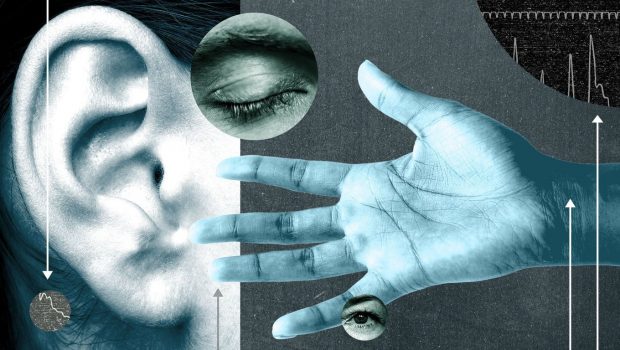Technology to help Latinos with disabilities
Quality of life for U.S. Latinos who have a disability tends to be worse than for other demographics, spurring efforts to develop new technologies that could help.
Why it matters: One in six Latino adults in the U.S. has a disability. As the Hispanic population grows, more people could be in need of support.
What’s happening: More than 5.4 million Hispanics — about 9%, of all ages —have some form of disability in the U.S., according to an analysis of census data by the University of New Hampshire's Institute on Disability.
- That's a lower rate overall compared to their white, Black and Native American peers, but Hispanics report greater levels of unemployment due to disability, higher school dropout rates and lower use of assistive devices.
- Latinos have twice the risk of non-Hispanic whites when it comes to developing worse health outcomes and limits to performing usual activities.
- Language barriers, fears over immigration status, cultural stigmas against seeking help, and not having health insurance can hinder the advancement of Latinos who have disabilities ranging from mental health disorders and physical differences to cognitive impairments.
Some technologies and services are emerging to support Latinos with disabilities. They include:
- A Mexican teen is developing an app to help sign language speakers and people who aren’t deaf communicate easier by translating, with video assistance, sign language to text and voice, and vice versa.
- A video relay service from Purple Communications provides sign language interpretation in both Spanish and English and has just joined forces with Meta for easier use in Facebook products and video chatting.
- The nonprofit World Institute on Disability has a range of digital tools, including Proyecto Visión, a bilingual work training platform that also offers information on how to find health insurance through a job, budgeting or disability benefits.
By the numbers: Of Hispanics with a disability in the U.S., 26% live in poverty compared to 32% of Black people with a disability and 17% of white non-Hispanic Americans who are disabled, according to the University of New Hampshire analysis.
- Latinos with disabilities are less likely to be insured: about 89% have coverage nationwide in comparison to 94% on average for Black, white non-Hispanic, Asian and Native American people with a disability.
What they’re saying: “Technology has certainly improved our arena for communication, to feel more connected, [through] apps that pick up speech and translate it, so we can enjoy activities like guided tours at a museum,” Elvia Guillermo Aguilar, who is in charge of intercultural alliances at the Equity, Diversity and Inclusion office of Gallaudet University, told Axios Latino.
The big picture: About 13% of the population in Latin America and the Caribbean — regions with even greater accessibility challenges — has a disability.
- In cities like La Paz, Bolivia, NGOs and municipal governments have made progress improving transportation access for people with disabilities. They've also created playgrounds and parks designed for kids in wheelchairs in Brazil.
- A university with dedicated workshops and areas for rehabilitation services is being built in Cali, Colombia, by the nonprofit Asodisvalle.








Gloss